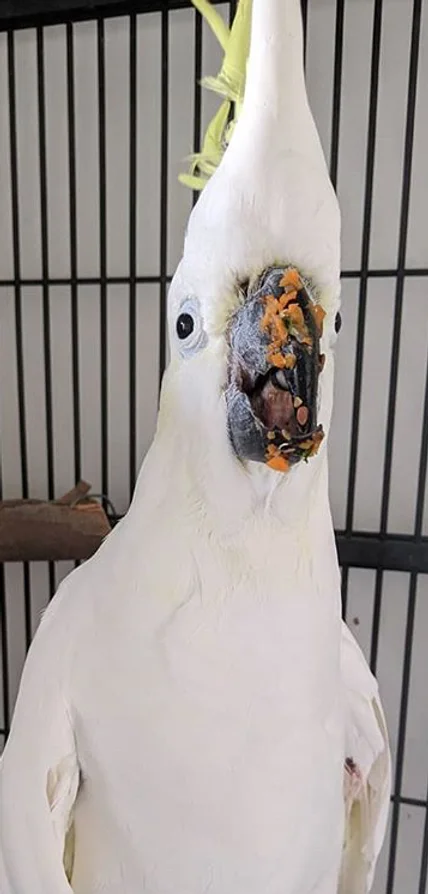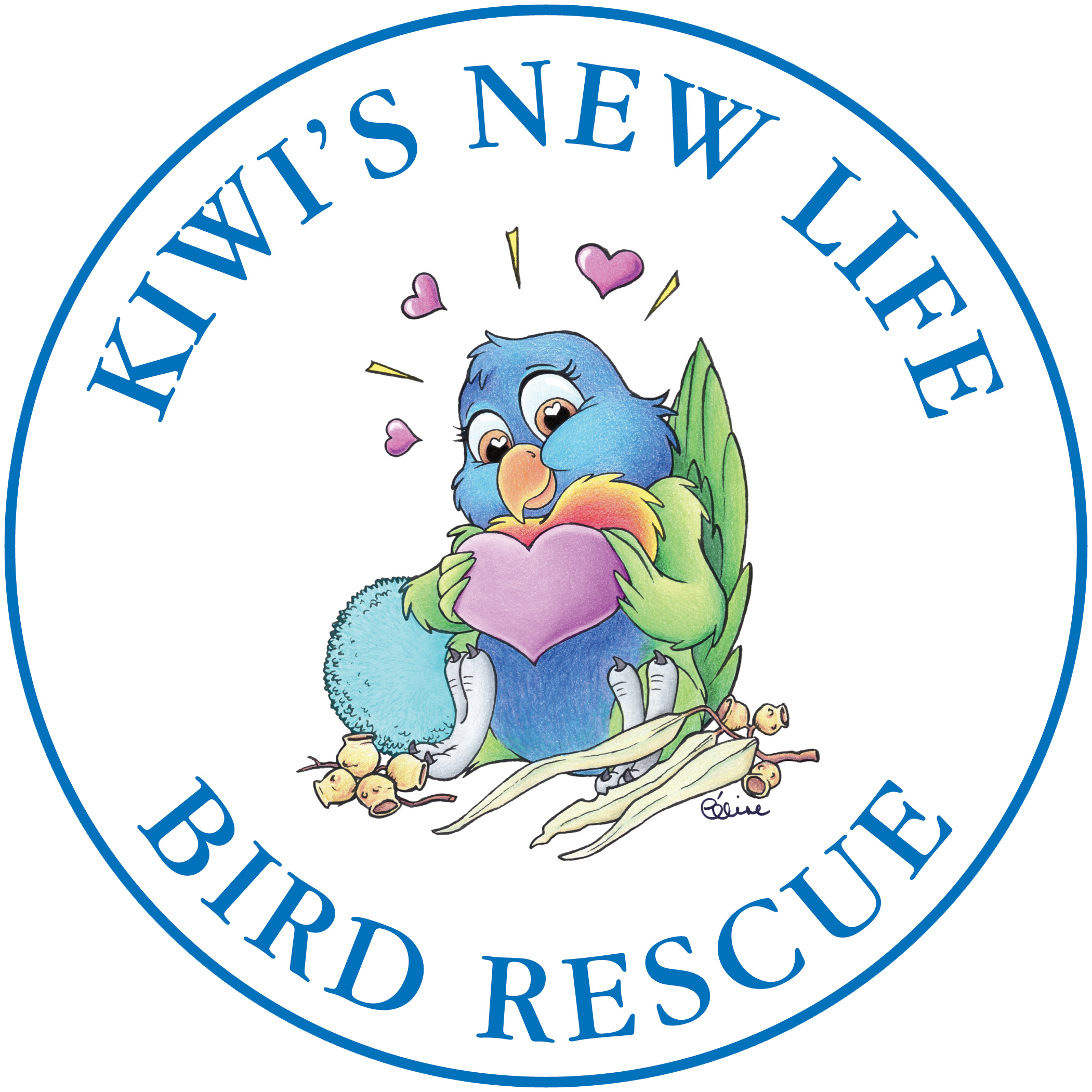HEALTHY BIRD DIET INFORMATION
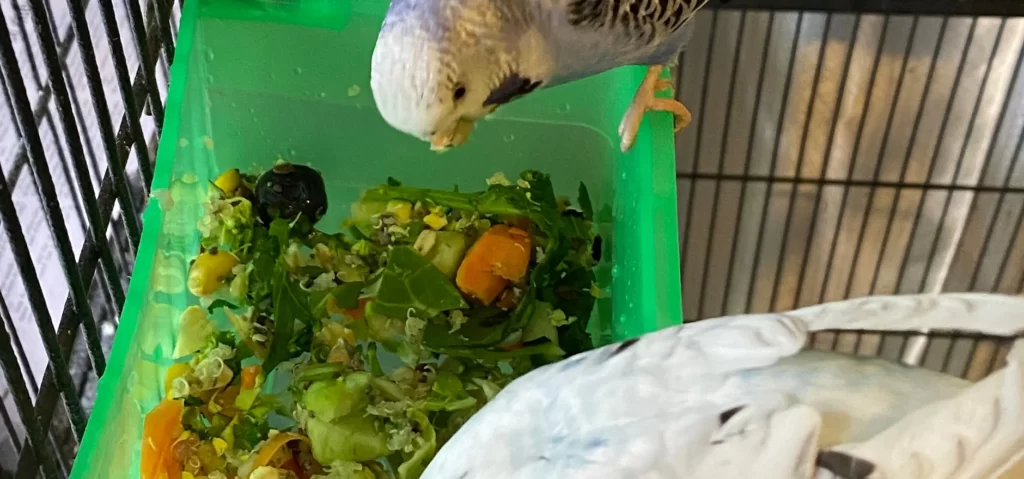
Feeding Your Bird a Healthy Diet for a Long Life
As a rescue, we get birds surrendered from various backgrounds. One of the most common things we see is birds that have been on seed only diets for years. Many cockatoos will have had sunflower seed only diets. We have had birds that have come in with gout, many galahs with fatty lumps the size of golf balls, birds with oily or poor feather condition from an oily seed diet, and the majority of birds with liver and kidney damage. The information on diet I am going to share, is based on the health conditions of the birds surrendered that came from seed only diets and the improvements in condition after being converted to healthy diets. Change in feather condition, behaviour, and blood panels all confirm our diet.
Birds need healthy, fresh food with lots of variety, with chop being the best option. Chop is essentially mostly vegetables, some fruit, grains, legumes, nuts, and healthy seeds (like flax, hemp, and chia) all combined into one healthy meal for your bird. Chopping into fine pieces will ensure there is a good mix of everything in each bowl, and it makes it harder to pick out the things they don't like. I use a food processor to rough chop most vegetables. You can make a large batch and freeze it into individual portions that you can set in the fridge the night before to thaw, or you can make a fresh batch each week. I find my fresh batches are good for about 4 days, so I am making fresh batches about twice a week. I also find the birds enjoy the fresh food more than frozen and thawed, but of course, frozen and thawed is better than no chop if your time does not allow for making fresh weekly. One thing for sure, once your bird has been converted to chop, it will be it's favourite food. Here at the rescue, we convert all birds to a chop diet. We also provide a species specific dry food on the side. All of our birds, from canaries all the way to cockatoos, love to eat their chop first before any other food. We convert all birds, from birds who have had seed only for 10-50 years to birds people swear we could not convert. Our chops are complete diets and according to all the birds here, our recipes are very tasty!
A good diet will help reduce your vet visits from diet related illnesses, and will give your bird the chance to live out it's full life.
Converting to a Healthy Diet
All Birds Can Be Converted
The one complaint we hear the most is "my bird is too stubborn and can't be converted!" This is simply not true. It has to be done correctly, but it is actually fairly simple. We convert all birds to healthy diets within a week, including birds that people swore that they had tried to convert for 20 years! The keys are the ingredients you use and your method. Also, if there is a seed bar hanging in your cage or a bowl of plain seed, your bird will always choose the seed first. Dry seed is the equivalent to fast food for humans. It's both tasty and really bad for you. Most people, when given the choice between fries and a salad, will choose the fries. It's the same with our birds. I often hear that seed is what birds should eat because it is what they normally eat in the wild. There is some validity in this, however, the information is not complete. Bird seed we buy from the store is dry seed. It has lots of stored energy so it can sprout and grow in to a plant. This stored energy equates to a high energy meal for birds. Birds in the wild do eat some seed, but the seed they find is fresh live seed that does not have the amount of stored energy dried seed has. Fresh live seed is very nutritious. They also have access to a larger variety of seed than is in store bought mixes. They spend their days searching for food and their diet varies depending on what they can find to eat. It also includes much more than seed depending on the type of bird. If you are going to feed seed, consider sprouting. When a seed sprouts it becomes a different, healthier food.
Notes: With some of the large birds like cockatoos and galahs, we can often skip step one and change their diet by simply taking away seed and giving pellet and chop. We skip to step 2 and mix seed in the chop for a week. They often start eating pellet on their own without much encouragement.
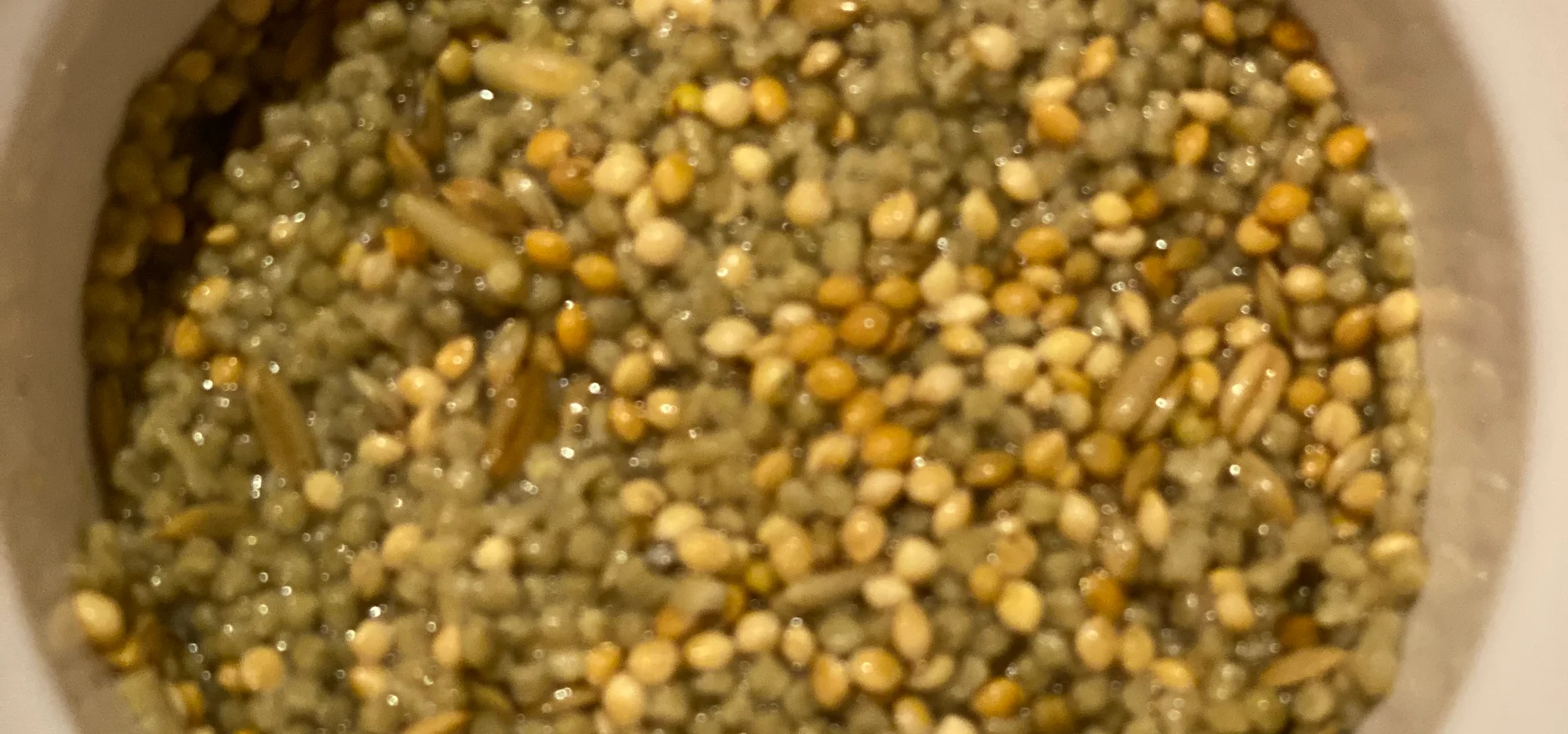
CONVERTING BIRDS ONTO A HEALTHY DIET
Step 1: Converting to Pellets
Not all pellets are equal! Many pellets have excellent marketing and packaging claiming they are a complete diet with all the essential things your bird needs, but these same pellets are packed full of sugar and artificial ingredients. Birds on these type of pellets often have hormonal, behavioural, and health issues. We won't discuss here which pellets to avoid, but if you open the bag and it smells like sugar and chemicals, it's probably in our do not feed list. We will recommend pellets that we have found to be better for the birds. We recommend Harrisons, Murphys, Natural Zupreem, and Paswells. We often use Harrisons or Paswells for the conversion process. They tends to dissolve and stick to the seed best. Mix pellets 50/50 with a budgie seed. Add water to the pellet and seed mix until it just covers the mix. This will create a mushy mix. The birds will dig the seed out of the mix and will taste the pellet. Change the mushy mix daily. After about three days, they will start eating more and more of the pellet in the mush. After one week, you should be able to put dry pellets in the cage with no seed and they will eat the pellets. During this process, never offer plain dry seed in the cage, and always offer a bowl of fresh food like chop. Also, closely monitor that they are eating. They often will pick out just seed the first day or two, but will start picking at the pellet and chop by day three.
Once converted to pellets, it's easy to switch to any quality pellet. Please research your pellets and use high quality pellets.
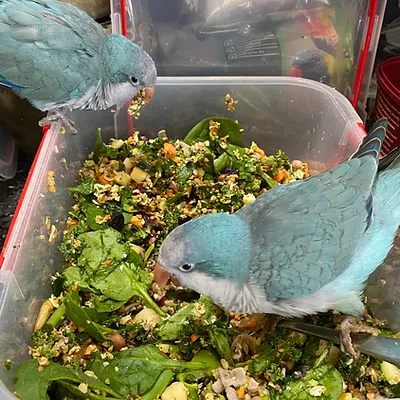
Step 2: Converting to Chop
Once you have converted to pellets, you can start focus on improving their love for chop. This step is easy, and they may have already started eating the chop during your pellet conversion. Now that you can offer dry pellets, offer chop and stir in a small amount of seed. We don't want to regress to only eating seed, so only add a small amount to encourage them to dig through the chop. With a good quality chop, your birds will convert quickly. Some keys to making your chop tasty is to add cooked grains, cooked quinoa, a small amount of grated nut, and healthy seed like flax, hemp, and chia plus the live seed from your capsicums, chilis, pumpkin, and melons. (Don't use apple seed. They contain small amounts of cyanide, not harmful if they eat one or two, but you don't want to purposefully add it to the diet.) After one week of stirring the seed into the chop, your bird should eat chop without seed by choice. Our birds can't wait for their daily chop!
OUR BASIC CHOP RECIPE:
Protein (cooked and cooled legumes)
Choose 1-2 (lentils, chickpeas, mung beans, black beans)
Quinoa
Grains (cooked and cooled)
Choose 1-2 (barley, freekah, oats, quinoa, buckwheat, amaranth, hulled millet, rye)
Root Vegetables
Choose 1 (radish, daikon radish, parsnip, carrot, turnip)
Beetroot
Cooked Sweet Potato
Leafy Greens
Choose 2 (silverbeet, kale, tuscan kale, any asian green, rocket, dandelion, bok choy)
Colourful Vegetables
Choose 3 or more (green beans, brussel sprouts, broccoli, cauliflower and leaves, fennel and stems, zucchini, capsicum and seeds, pumpkin and raw seeds, or sprouts like alfalfa, mung beans, lentils, chickpeas)
Fresh Spices
Choose 1 or more (chilli and seeds, tumeric, corriander, basil, dill, dandelion, rosemary, thyme)
Healthy Seeds
Choose 3 or more (hemp, ground flax, sunflower seed, chia, pine nuts, fennel seeds, pumpkin seeds, millet, milk thistle seeds)
Ground flax, hemp, sunflower, and chia are our daily favourite at the rescue
Chop Tips
Tips that we have found for making chop
Make chop without fruit and offer a small piece of fruit on occasion as a treat
Cooked quinoa and healthy seeds gets even the pickiest eaters to try chop.
Be sure to cool your cooked items thoroughly. Run under cold water till completely cool.
Beetroot is a favourite
Dried beans should always be either rehydrated and fully cooked and cooled or sprout them
Never use canned fruit or vegetables. Fresh is best.
Use raw unsalted nuts and seeds
Foods to avoid: avocado (kills), garlic, onion, tomato stems and leaves, mushrooms, fruit pits and apple seeds, rhubarb, salted nuts or salted seeds, uncooked dried beans
Little to no nutritional value: iceburg lettuce and white potato
